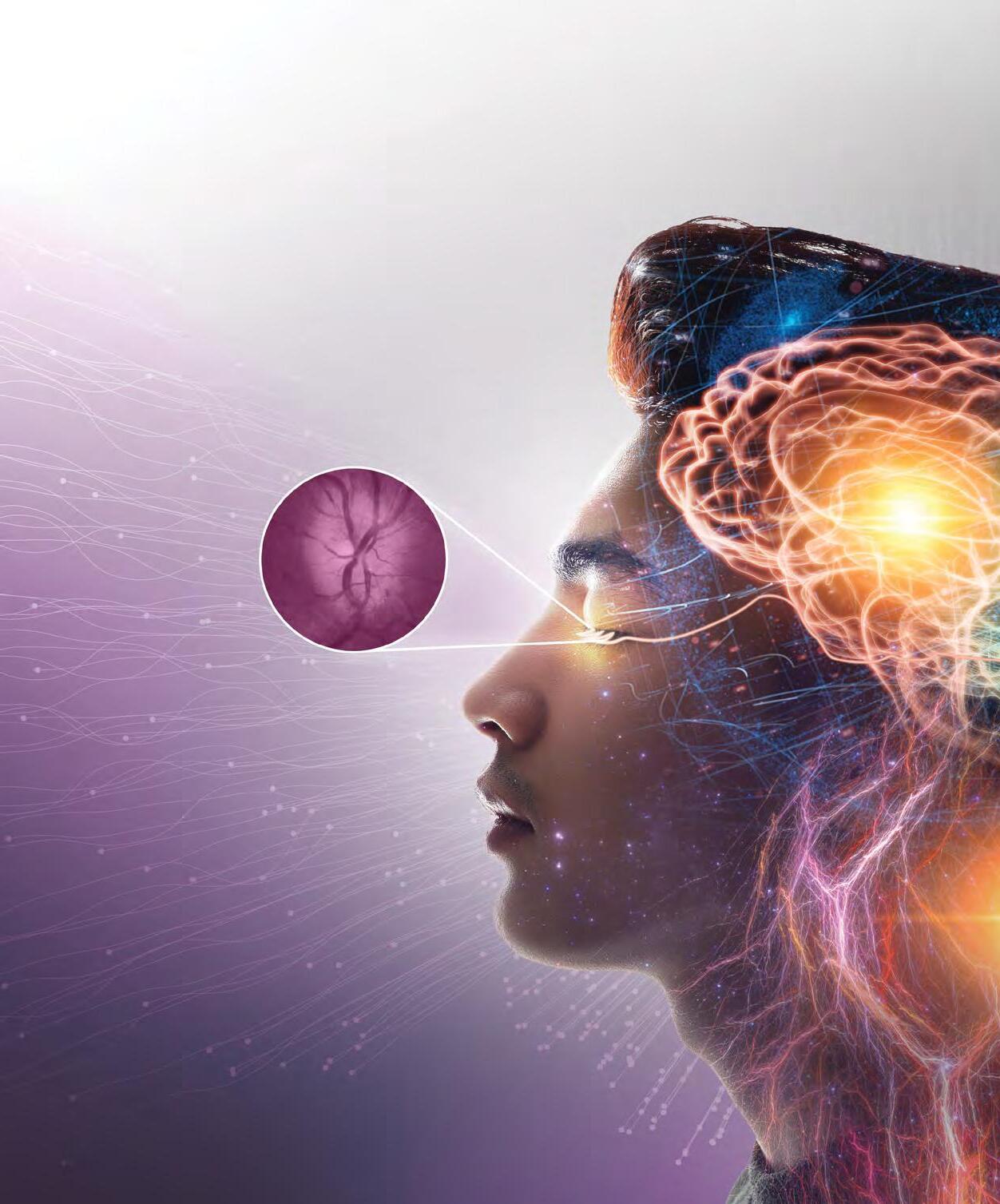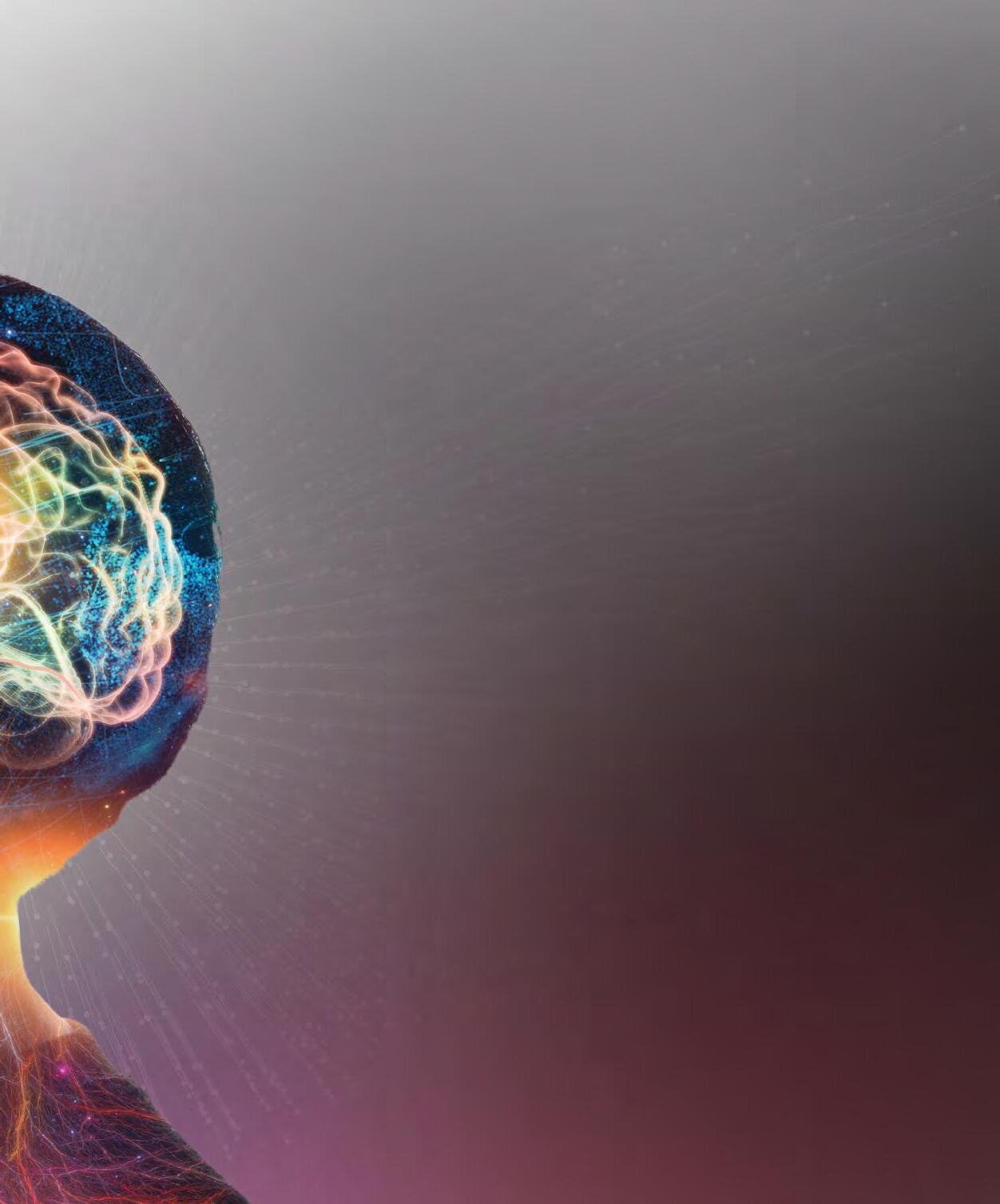
4 minute read
My and Brain Eye
ExploringOurNeural Network of Vision
Neuro-ophthalmology is a field of medicine that deals with visual problems caused by conditions of the brain and nervous system. Our experts at SNEC discuss this and more. SNEC is also using artificial intelligence (AI) technology to detect neuroophthalmological disorders.
Advertisement
In many instances, the neuro-ophthalmologist is like a detective. The doctor puts together the constellation of eye and neurological symptoms and signs to predict the nature and location of the problem within the brain before conducting the relevant investigations such as blood tests or brain scans. However, since neuro-ophthalmologists are usually only available in tertiary hospitals, these decisions can be difficult to make in primary care or emergency settings.
For instance, someone may go into the Accident & Emergency (A&E) department in the middle of the night, complaining of an extremely bad headache while lacking symptoms of visual impairment. The patient would not get to see an ophthalmologist at that time and may instead be sent for brain scans to rule out the small chance of stroke or brain haemorrhage.
The Neuro-Ophthalmology Department decided to address this shortcoming in clinical care systems by developing an artificial intelligence (AI) system that could screen for lifethreatening conditions, not only in the eye but in the brain, by interpreting photographs of the optic nerve.
AI and deep learning algorithms have recently been increasingly applied in ophthalmology to detect various ophthalmic diseases, such as diabetic retinopathy and glaucoma. However, this is the first time this technology is being applied to use the eye as ‘a window into the brain’. “To do this, we have used the optic nerves as a proxy to detect brain conditions,” said Professor Dan Milea, a senior consultant neuro-ophthalmologist.

To collect large numbers of retinal photographs to train the AI system, SNEC first created an international Consortium (BONSAI – Brain and Optic Nerve Study with Artificial Intelligence). It collaborated with renowned expert neuro-ophthalmologists from 24 centres in 15 countries on 3 continents who jointly contributed to the study. The AI system was trained and tested on this enormous data set and proved very effective in diagnosing life-threatening brain conditions.
SNEC’s deep learning AI software system Selena+ has shown that an AI system can look at images of the back of our eyes and accurately detect a specific type of optic nerve abnormality known as papilledema. Papilledema is the swelling of the optic nerve head due to pressure buildup in or around the brain and is linked to life or vision-threatening diseases of the brain, such as brain tumours. Led by Professor Milea, the paper was published in the prestigious New England Journal of Medicine in 2020.
Apart from being applied in the emergency setting, this system will also be useful for neurologists and neurosurgeons, who need an immediate, accurate and automated assessment of the optic nerve head without available ophthalmologists. It will assist greatly in the decision-making processes when ordering brain imaging.
Serving our patients who have unexplained visual loss, double vision, eyelid spasms
At SNEC, the Neuro-Ophthalmology Department sees patients with a wide spectrum of conditions including unexplained visual loss, double vision, droopy eyelids, and facial or eyelid spasms. Those with visual loss are often unable to see well despite having no obvious abnormality in their eye. They need a thorough neurological evaluation for a problem in the optic nerve or brain that might be resulting in visual loss. This could include problems with the optic nerve itself (either inherited or acquired as an adult) or conditions such as a stroke or tumour affecting parts of the brain involved in vision. Double vision is most commonly due to eye movement abnormalities or caused by similar problems in areas of the brain that control eye movement.
Patient journey and a multi-disciplinary approach to treatment
“The Neuro-Ophthalmology Department adopts a multi-disciplinary approach and works closely with neurologists, neurosurgeons, neuroradiologists as well as other specialities such as endocrine physicians and Ear Nose and Throat (ENT) surgeons to ensure comprehensive systemic care is provided,” said Dr Loo Jing Liang, Head Neuro-Ophthalmology Dept, SNEC.
1 Optic Neuritis (Sudden Visual Loss)
Optic neuritis is a potentially blinding inflammatory condition of the optic nerve. It causes sudden visual loss, which can range from partial visual field defect to total blindness. The underlying causes may be related to neuromyelitis optica and multiple sclerosis.
2 Ischaemic Optic Neuropathy (Stroke of the Eye)
Ischaemic optic neuropathy is an acute condition where the optic nerve is damaged due to insufficient blood supply. It is also known as ‘stroke’ of the optic nerve and causes sudden, painless visual loss.
3 Ocular Myasthenia Gravis (Droopy Eyelids and Double Vision)
Myasthenia gravis occurs when nerve impulses from the nerve to the muscles are blocked, leading to muscle weakness. This condition can affect the eyelids and the muscles that control eye movement, causing droopy eyelids and double vision.
Some of the common neuro-ophthalmological disorders for which SNEC provides consultation include: Pop
Turn to page 27 to find out!
4 Eyelid Myokymia, Hemifacial Spasm and Benign Essential Blepharospasm (Eyelid or Facial Twitching and Spasm)
These conditions causing involuntary eyelid and/or facial twitching or spasms may be differentiated by a detailed neuroophthalmological examination. Botulinum toxin injections (Botox) may be used to treat some of these conditions.
5 Conditions causing binocular double vision (Diplopia)
Diplopia is a symptom whereby a patient sees two images of one object. If it occurs only when both eyes are open and disappears when either eye is occluded, it is known as binocular diplopia. The latter may be due to cranial nerve palsies and myasthenia gravis, etc.
6 Conditions causing acute or chronic visual loss
These conditions may include but are not limited to brain tumours, stroke, and raised intracranial pressure causing papilloedema and genetic optic neuropathies, etc.
Key facts and figures about SNEC Neuro-Ophthalmology Department
Q2
What causes droopy eyelids?
Turn to page 27 to find out!
Team of 5 specialists Approximately 4,500 patients annually
Organises an annual essential skills in neuro-ophthalmology one-day masterclass for Ophthalmology residents, both locally and regionally; it has an extensive following, both locally and internationally, with a highly soughtafter ‘live’ patient examination module
To date, 6 local fellows and 8 international fellows from the region have completed their Neuro-Ophthalmology fellowship in the department
Receives regular observers from around the region








